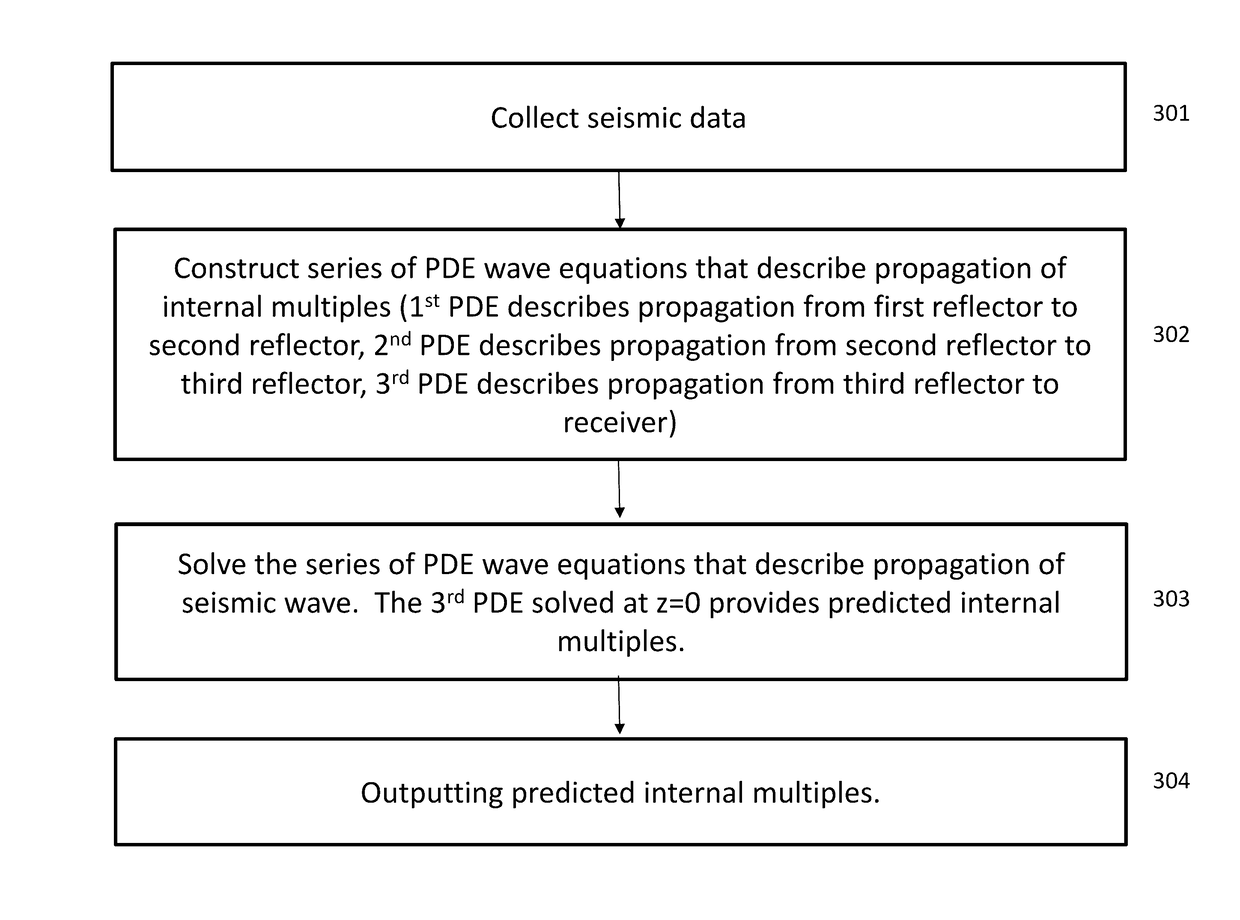Efficient internal multiple prediction methods
a prediction method and multiple prediction technology, applied in the field of system and method for improving seismic images, can solve the problems of inability to predict multiples, inability to accurately predict multiples, etc., and achieve the effect of reducing the computational cost of conventional inverse scattering series
- Summary
- Abstract
- Description
- Claims
- Application Information
AI Technical Summary
Benefits of technology
Problems solved by technology
Method used
Image
Examples
example
[0024]Internal multiple prediction was performed on a 2-D synthetic data using method of the present invention and conventional inverse scattering series. The synthetic dataset contained 641 shots with 12.5 m shot interval and 12.5 m receiver interval. Sampling rate was 4 ms and trace length was 2 s. FIG. 2A illustrates a single shot record as the input seismic data for the multiple prediction, which includes both primary and the internal multiples. FIG. 2B shows the predicted internal multiples of the same shot record using PDE-based approach. FIG. 2C shows the predicted internal multiples of the same shot record using the conventional inverse scattering series approach. The two methods provide almost identical internal multiple predictions. However, the PDE-based approach took ˜17 minutes while conventional inverse scattering series approach took ˜28 hours. The speedup ratio of the present invention on this dataset is about 99 times. This ratio is expected to be more dramatic for ...
PUM
 Login to View More
Login to View More Abstract
Description
Claims
Application Information
 Login to View More
Login to View More - R&D
- Intellectual Property
- Life Sciences
- Materials
- Tech Scout
- Unparalleled Data Quality
- Higher Quality Content
- 60% Fewer Hallucinations
Browse by: Latest US Patents, China's latest patents, Technical Efficacy Thesaurus, Application Domain, Technology Topic, Popular Technical Reports.
© 2025 PatSnap. All rights reserved.Legal|Privacy policy|Modern Slavery Act Transparency Statement|Sitemap|About US| Contact US: help@patsnap.com



